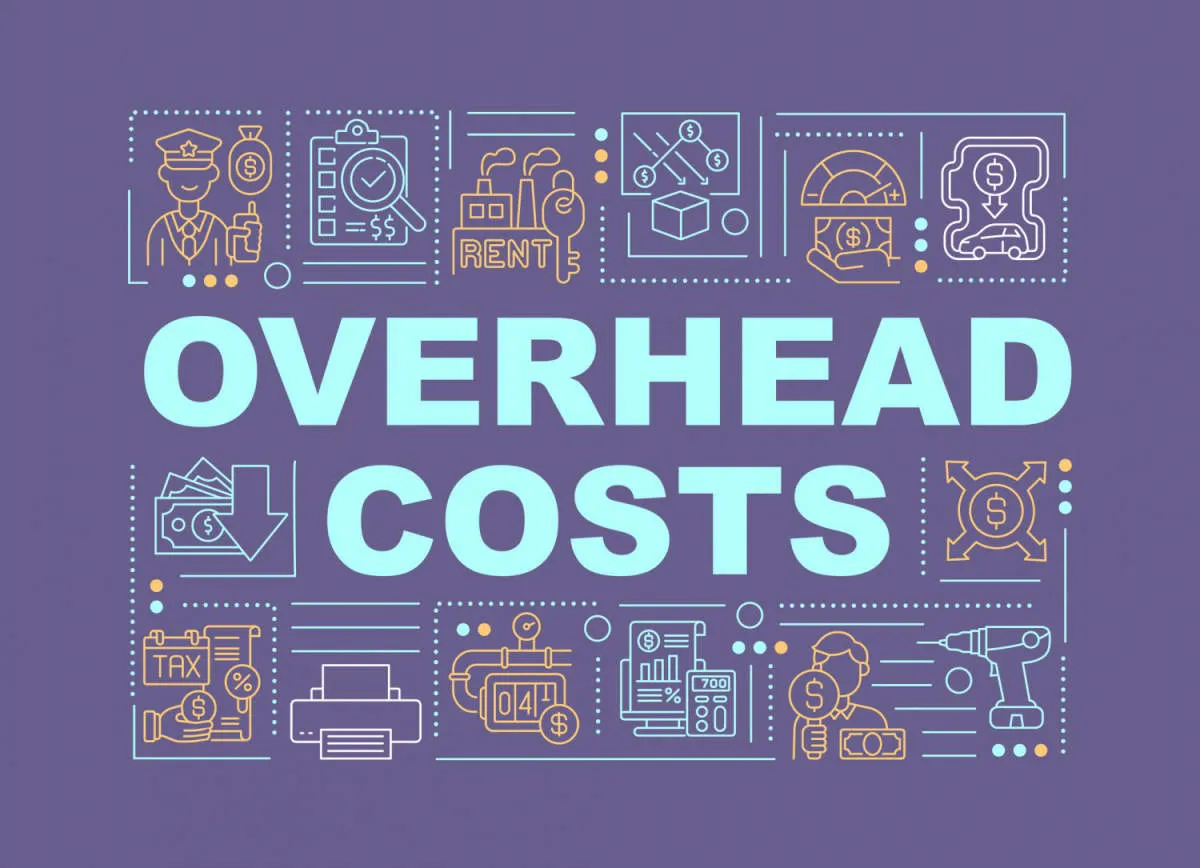Learn effective strategies to enhance cash flow in your small business with practical tips and expert insights on managing finances, reducing expenses, and maximizing revenue streams.
Understanding Cash Flow

Cash flow is the lifeblood of any business, especially small businesses. It represents the movement of money in and out of your business. Having a clear understanding of your cash flow is crucial for making informed financial decisions.
Simply put, cash flow is the difference between the cash you have coming in (inflow) and the cash you have going out (outflow) over a specific period.
Why is Understanding Cash Flow Important?
Understanding your cash flow is essential for several reasons:
- Meeting financial obligations: Paying your bills on time, including rent, utilities, inventory, and payroll, depends on having sufficient cash flow.
- Making informed business decisions: Knowing your cash flow helps you make decisions about investments, expansions, or even cutting costs.
- Securing funding: Lenders and investors often assess your cash flow to determine your creditworthiness and ability to repay loans.
- Identifying potential problems: Monitoring your cash flow can alert you to potential shortfalls or areas where you might need to adjust your spending.
Managing Accounts Receivable

Accounts receivable represents the money owed to your business for goods or services already delivered or used but not yet paid for by customers. It’s a crucial aspect of cash flow management, as delayed payments can significantly impact your working capital.
Establish Clear Credit Terms
Set clear and concise credit terms with your customers from the outset. This includes specifying payment due dates, accepted payment methods, and any penalties for late payments. Clearly communicate these terms in your invoices and contracts.
Invoice Promptly and Accurately
Issue invoices promptly after the delivery of goods or services. Delays in invoicing can lead to delays in payment. Ensure your invoices are accurate, detailed, and include all necessary information to avoid any confusion or disputes.
Offer Early Payment Discounts
Incentivize early payments by offering discounts to customers who pay their invoices before the due date. This can motivate prompt payment and improve your cash flow.
Implement Online Payment Options
Make it easy for customers to pay you by offering convenient online payment options, such as credit card processing, online payment platforms, or mobile payments. This can speed up the payment process and reduce the likelihood of delays.
Follow Up on Overdue Invoices
Implement a system for tracking and following up on overdue invoices. Send payment reminders via email or phone calls. If necessary, consider escalating the matter to a collections agency as a last resort.
Controlling Inventory

Inventory represents a significant portion of your capital tied up in your business. Effective inventory management can significantly impact your cash flow. Here’s how:
Reduce Holding Costs
Holding onto inventory longer than necessary incurs storage, insurance, and potential obsolescence costs. Implement inventory tracking systems to monitor stock levels and identify slow-moving items. Consider strategies like just-in-time (JIT) inventory management to minimize holding costs by receiving goods only when needed for production or sale.
Optimize Inventory Turnover Rate
Inventory turnover rate measures how quickly you sell your inventory. A higher turnover rate generally indicates efficient inventory management and improved cash flow. Analyze sales data to understand product demand and adjust inventory levels accordingly. Implement inventory control methods like ABC analysis to prioritize high-value items and ensure their availability.
Negotiate Better Terms with Suppliers
Negotiating favorable payment terms with your suppliers can provide you with more breathing room in managing cash flow. Explore options such as extended payment deadlines or discounts for early payments. Building strong relationships with suppliers can create opportunities for mutually beneficial agreements regarding inventory management.
Implement Regular Inventory Audits
Conducting regular inventory audits helps identify discrepancies between physical inventory and recorded data. These discrepancies can stem from theft, damage, or inaccurate record-keeping. Implement a system for regular stocktaking and investigate and address any discrepancies promptly.
Reducing Overhead Costs

Overhead costs are the indirect expenses of running a business, such as rent, utilities, and administrative salaries. These costs can eat into your profits and make it difficult to improve your cash flow. Fortunately, there are many ways to reduce your overhead costs without sacrificing quality or productivity.
Here are a few ideas:
- Negotiate with suppliers: Don’t be afraid to negotiate better rates with your suppliers, especially if you’ve been with them for a long time or if you’re ordering in bulk.
- Reduce office space: With the rise of remote work, consider downsizing your office space or adopting a hybrid model to save on rent, utilities, and other related expenses.
- Go paperless: Transition to digital documentation and communication to reduce printing, postage, and storage costs. There are many great software programs that can help with this transition.
- Outsource strategically: Consider outsourcing tasks like accounting, payroll, or customer service to free up your time and potentially reduce costs associated with hiring full-time employees.
- Review subscriptions and services: Regularly evaluate your business subscriptions and software to identify any redundancies or services you’re not fully utilizing. Canceling unnecessary subscriptions can lead to significant savings over time.
- Reduce energy consumption: Implement energy-saving practices in your workplace, such as using energy-efficient lighting, appliances, and encouraging responsible heating and cooling habits.
By carefully analyzing your overhead expenses and implementing some of these strategies, you can free up significant cash flow in your business.
Improving Profit Margins

Improving your profit margins is a direct path to better cash flow. Here’s how to boost your bottom line:
- Review Pricing: Are you charging enough for your products or services? Conduct a market analysis to see how your pricing compares to competitors. Don’t be afraid to raise prices if you’re undervaluing your offerings, but be strategic and consider the impact on sales volume.
- Control Costs: Scrutinize every expense. Can you negotiate better rates with suppliers? Are there any unnecessary subscriptions or services you can cut? Even small cost reductions can significantly impact your margins.
- Inventory Management: Holding excess inventory ties up cash flow. Implement inventory control measures to ensure you have enough stock to meet demand without excessive surplus. Explore just-in-time inventory systems if applicable.
- Boost Sales Efficiency: Focus on converting leads into paying customers more effectively. Analyze your sales funnel to identify bottlenecks and implement strategies to improve conversion rates at each stage.
- Upselling and Cross-selling: Train your team to identify opportunities to upsell higher-priced products or cross-sell related items to existing customers. This can increase the average transaction value and your profit per customer.
Planning for Future Cash Flow

Projecting your business’s future cash flow is essential for making informed decisions and securing long-term financial stability. While you can’t predict the future perfectly, a well-structured cash flow forecast acts as a roadmap, helping you anticipate potential shortfalls and capitalize on opportunities.
Here’s how to approach planning for future cash flow:
1. Historical Data Analysis
Start by analyzing your past cash flow statements. Identify trends, seasonal fluctuations, and any one-time events that impacted your cash flow. This historical data serves as the foundation for your projections.
2. Sales Forecasting
Accurately forecasting future sales is crucial. Consider factors influencing sales, such as market trends, economic conditions, marketing campaigns, and competitor analysis. Use a combination of historical data and realistic projections to estimate future sales revenue.
3. Expense Projections
Categorize your business expenses and project their future costs. Account for fixed costs like rent and salaries, as well as variable expenses that fluctuate with sales. Don’t forget to factor in potential increases in material costs or other expenses.
4. Scenario Planning
Prepare for different possibilities by developing multiple cash flow scenarios. Create a best-case, most likely, and worst-case scenario. This will help you understand the potential range of outcomes and develop contingency plans if needed.
5. Regular Review and Adjustment
Don’t treat your cash flow forecast as a static document. Review and update it regularly, at least monthly or quarterly. Analyze variances between your projections and actual results. This allows you to make necessary adjustments to your business strategies and financial plans.
6. Utilizing Technology
Leverage accounting software or dedicated cash flow forecasting tools. These tools can streamline the process, automate calculations, and provide insightful visualizations of your projections.
Conclusion
In conclusion, implementing effective cash flow management strategies is crucial for the success of small businesses. By monitoring expenses, optimizing revenue streams, and maintaining a cash reserve, businesses can improve financial stability.

